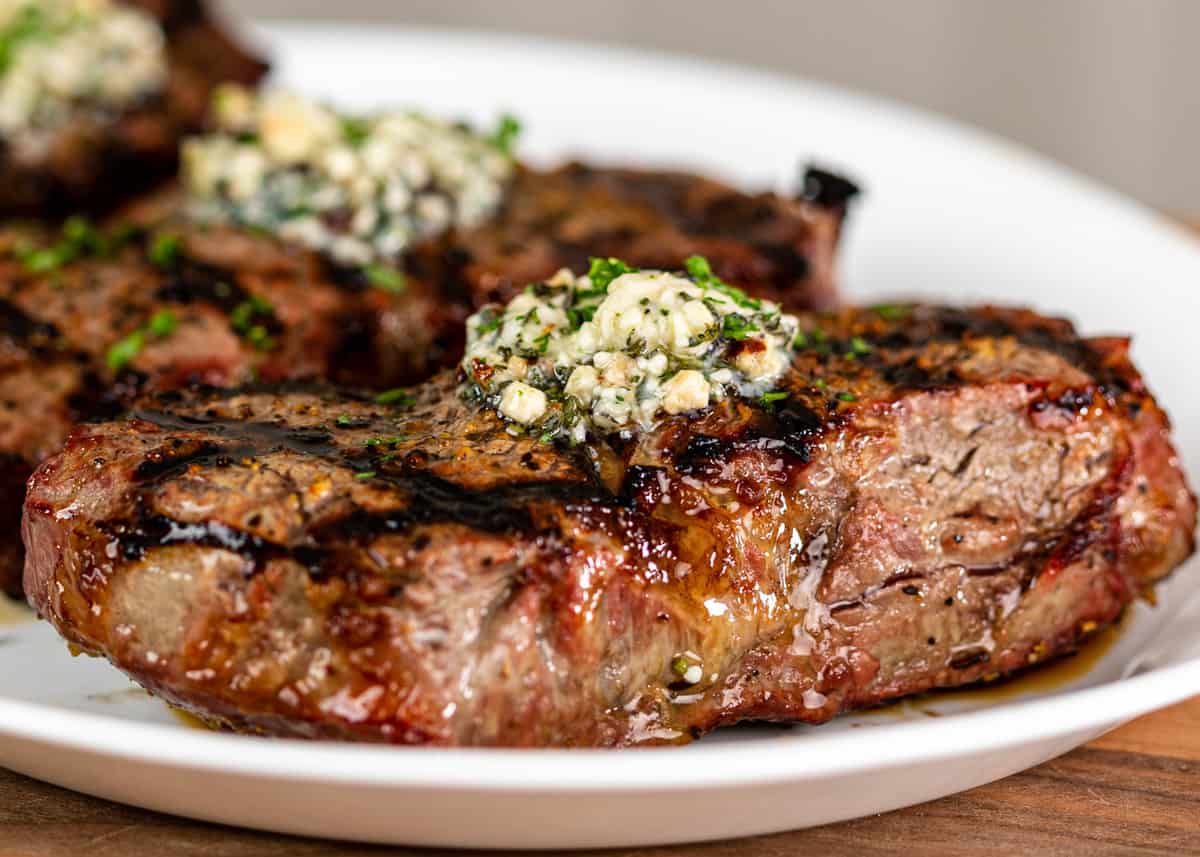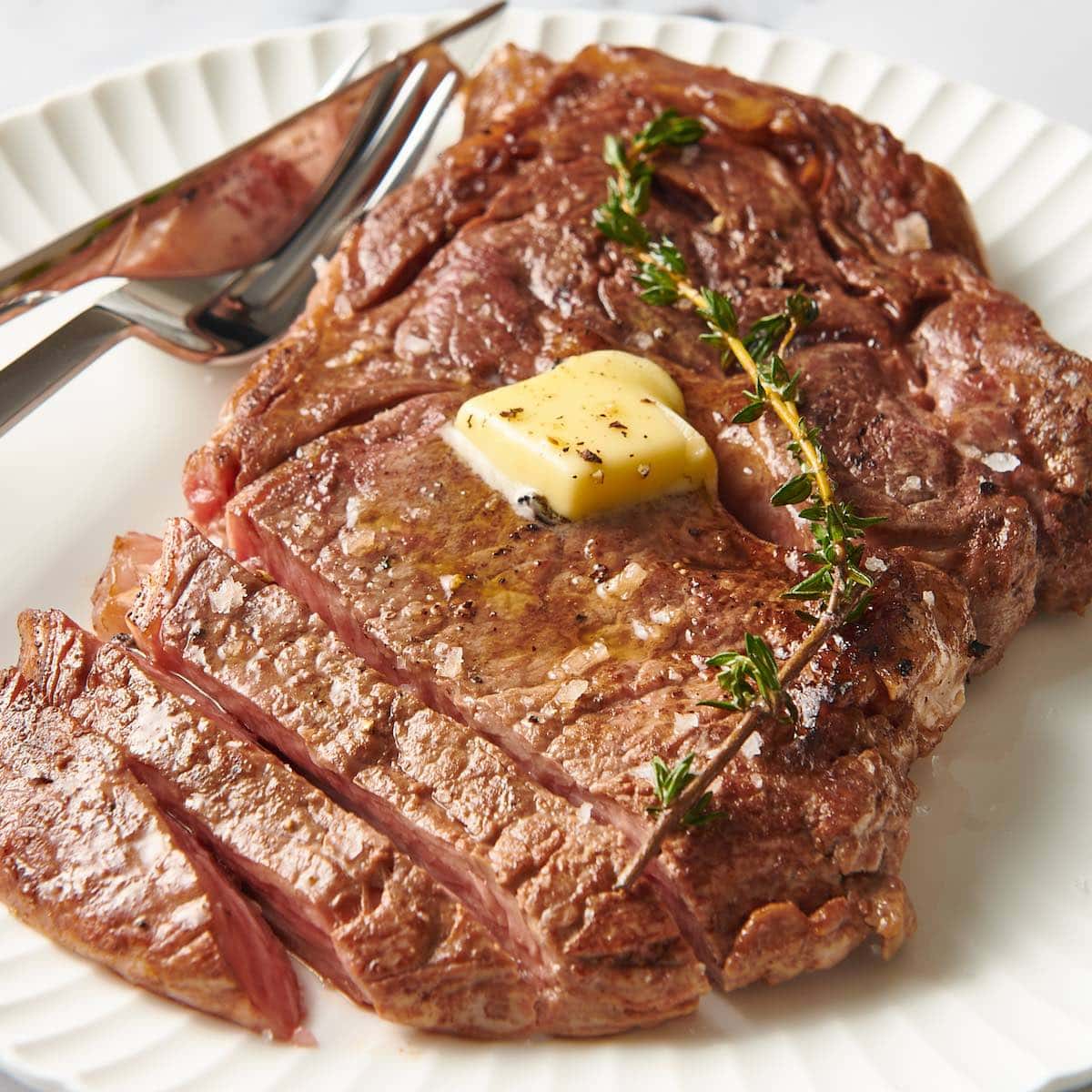Classic Ribeye Steak: A Perfectly Cooked Masterpiece
Few meals are as synonymous with indulgence and luxury as a classic ribeye steak. Known for its rich marbling, robust flavor, and tender texture, the ribeye is a cut that steak lovers gravitate towards when they’re seeking a truly satisfying experience. Whether grilled, pan-seared, or broiled, a well-prepared ribeye steak is a masterpiece of culinary simplicity, allowing the quality of the meat to speak for itself.
In this article, we’ll explore what makes the ribeye steak so special, the techniques for cooking it to perfection, and the best ways to enhance its flavor without overpowering its natural richness.
What is a Ribeye Steak?
The ribeye steak comes from the rib section of the cow, specifically from ribs six through twelve. It’s cut from the same area as the prime rib but is served as a single steak rather than a roast. What distinguishes the ribeye is its intramuscular fat, also known as marbling. This fat melts during cooking, infusing the meat with flavor and keeping it tender and juicy.
A ribeye can be sold bone-in or boneless, with the bone-in version sometimes referred to as a “cowboy steak.” The bone contributes extra flavor and moisture to the meat as it cooks, but both bone-in and boneless versions are revered for their taste and texture.
The Appeal of Ribeye: Flavor and Texture
What sets ribeye apart from other cuts like filet mignon or strip steak is its balance of tenderness and flavor. Thanks to the ample marbling, ribeye has a deep, beefy flavor that’s both robust and slightly sweet. The fat within the steak breaks down as it cooks, resulting in a buttery, melt-in-your-mouth texture.
Compared to leaner cuts, ribeye steaks are juicy, rich, and more forgiving to cook, making them an ideal choice for both seasoned grill masters and home cooks alike. The key to enjoying ribeye is embracing its natural fat content, which is what gives the steak its signature flavor.
Choosing the Right Ribeye
When selecting a ribeye steak, look for one with a deep red color and ample marbling. The marbling—the streaks of white fat running through the meat—is crucial for flavor and tenderness. The more marbling, the more flavorful and juicy the steak will be.
For those seeking an extra indulgent experience, opting for a prime grade ribeye (the highest USDA grading) ensures the best marbling and quality. Additionally, you can choose between bone-in and boneless options, with bone-in adding a bit more flavor and a rustic presentation to the dish.
How to Cook a Classic Ribeye Steak
One of the beauties of the ribeye steak is how straightforward it is to cook. The high fat content means it’s forgiving, and its natural flavor requires little more than salt, pepper, and heat to shine.

Ingredients:
- 1 ribeye steak (1 to 1.5 inches thick)
- Kosher salt
- Freshly ground black pepper
- 1-2 tablespoons of olive oil or butter
- Optional: fresh garlic cloves, rosemary, and thyme for added flavor
Step 1: Bring the Steak to Room Temperature
Before cooking, let the steak rest at room temperature for 30 to 45 minutes. This ensures that the steak cooks evenly. Pat the steak dry with paper towels to remove excess moisture, which helps create a nice crust during cooking.
Step 2: Season the Steak
Season both sides of the steak generously with kosher salt and freshly ground black pepper. Don’t skimp on the seasoning; a thick cut like ribeye needs plenty of salt to enhance its flavor.
Step 3: Preheat the Pan or Grill
For the perfect sear, you’ll need high heat. If using a cast-iron skillet or stainless steel pan, heat it over medium-high heat for several minutes until it’s smoking hot. For grilling, preheat the grill to high heat (around 450-500°F).
Step 4: Sear the Steak
If cooking on the stovetop, add olive oil or butter to the pan, and immediately place the steak in the skillet. Sear for 3-4 minutes on each side to develop a golden-brown crust. If you prefer a more flavorful sear, add crushed garlic cloves, fresh rosemary, and thyme to the pan.
For grilling, place the ribeye directly over the hottest part of the grill and cook for 4-5 minutes per side for medium-rare (adjust based on your preferred doneness).
Step 5: Check the Internal Temperature
To achieve the perfect doneness, use a meat thermometer to check the internal temperature:
- Rare: 120-125°F
- Medium-rare: 130-135°F
- Medium: 140-145°F
- Medium-well: 150-155°F
- Well-done: 160°F and above
Remove the steak from heat when it reaches about 5°F below your desired doneness, as it will continue to cook while resting.

Step 6: Let It Rest
After cooking, let the ribeye rest for 5-10 minutes. This allows the juices to redistribute throughout the meat, ensuring that every bite is juicy and tender. Cover the steak loosely with foil during this resting period to retain heat.
Step 7: Serve
Slice the ribeye against the grain for optimal tenderness, and serve with your favorite sides. Whether it’s creamy mashed potatoes, roasted vegetables, or a simple salad, the steak will be the star of the plate.
Enhancing the Ribeye: Simple Yet Delicious Pairings
While a well-cooked ribeye needs little embellishment, there are a few ways to elevate your steak experience:
- Compound Butter: A dollop of herb-infused butter, such as garlic butter or a mix of parsley and lemon zest, can add an extra layer of flavor.
- Steak Sauce: Though purists may argue against it, a simple homemade steak sauce with balsamic vinegar, Dijon mustard, and Worcestershire sauce can complement the ribeye’s richness.
- Side Dishes: Serve with a side of roasted garlic mashed potatoes, grilled asparagus, or creamed spinach for a classic steakhouse feel.
Final Thoughts: Why Ribeye Reigns Supreme
The ribeye steak is a favorite among steak enthusiasts for good reason. Its rich marbling, intense flavor, and tender texture make it the perfect cut for those seeking a luxurious steak experience. With simple seasoning and a precise cooking method, you can transform a ribeye into a restaurant-quality meal at home. Whether you’re grilling outdoors or searing in a cast-iron pan, the key to a great ribeye is in letting the natural qualities of the meat shine. A ribeye steak isn’t just a meal—it’s an event, a chance to indulge in one of the finest cuts of beef, cooked to perfection.



